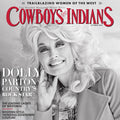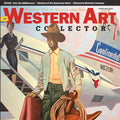Glen Cranall's Process of Segmented Wood Turning
By Medicine Man Gallery on
Glen Crandall's Process of Segmented Wood Turning
This type of wood turning is often called “segmented turning,” because the vessel is made up of a number of wood “segments” which are assembled and glued into rings. These rings are of various diameters and thicknesses. Designs are typically accomplished by varying the lengths, thicknesses , angles and wood varieties in the segments.
There are a number of different ways to do a segmented vessel. The following pictures and text will briefly describe in a general way how I do my segmented turning:

This shows a typical ring with a couple of the segments that made it up. Segments are glued then clamped into a ring.

This ring is typical of one which would be part of a design.

This is one of the segments which will be part of the principle design pattern – sometimes referred to as the “feature ring.”

These are the pieces which make up the segment shown above.

This is another segment which will be part of the feature ring.

This shows all of the rings which will go into the pot. The bottom is on the left and the top is on the right.

Here are the assembled rings dry stacked in the order in which they will be glued up.

This shows the rings after they have been trued up and glued, and mounted on the lathe. The inside has been turned and the outside is ready for final turning.

This is the completed piece. Varieties of wood used in this particular piece are:
Lacewood – the reddish-brown wood which makes up the body of the pot.
Holly – the white wood used in the design sections.
Peruvian Walnut – the dark wood used in the design sections.
Finish is a clear urethane varnish.
This particular pot contains 846 individual pieces of wood.



